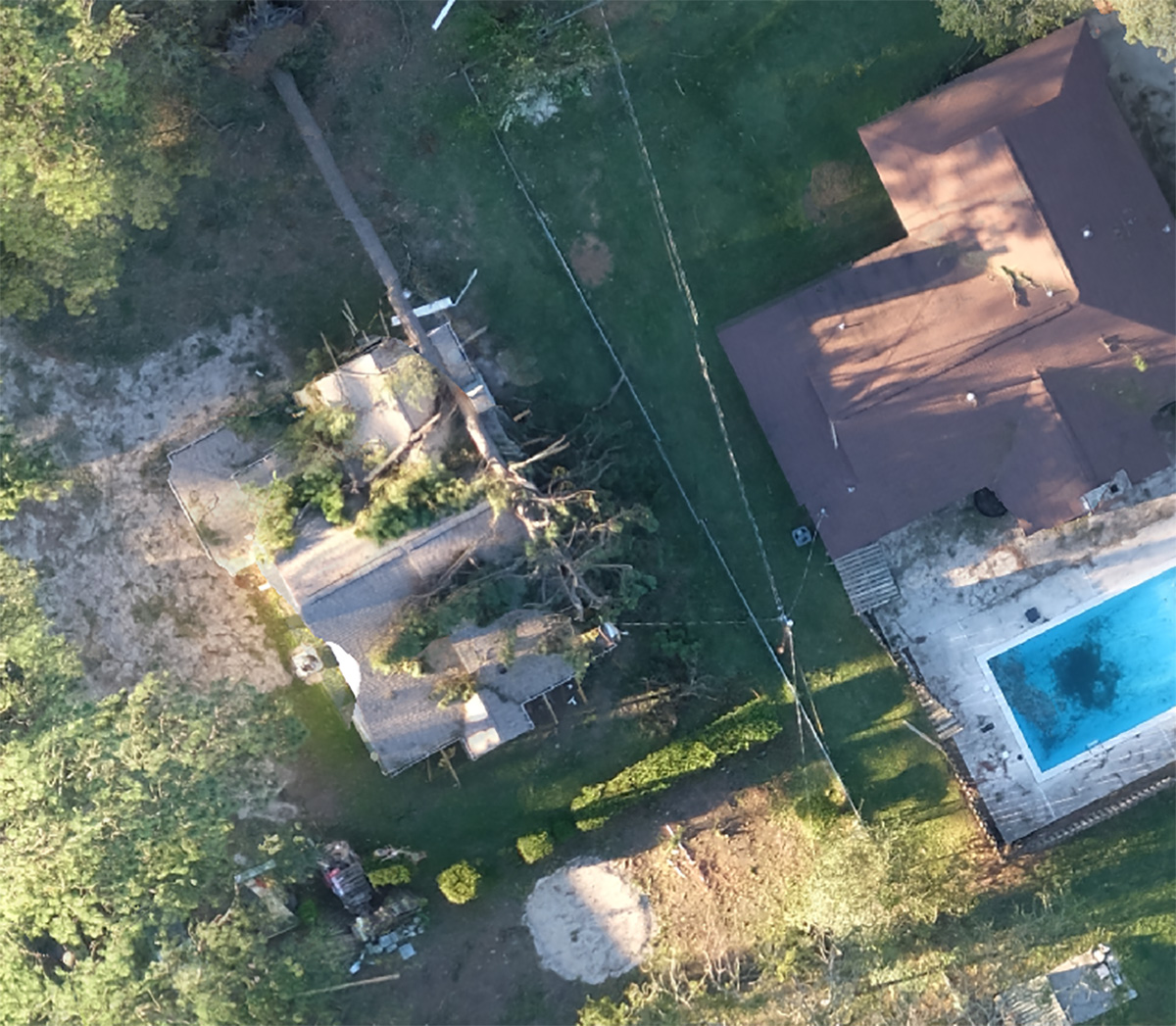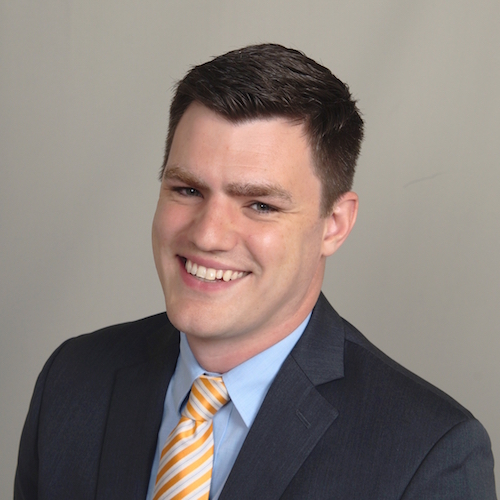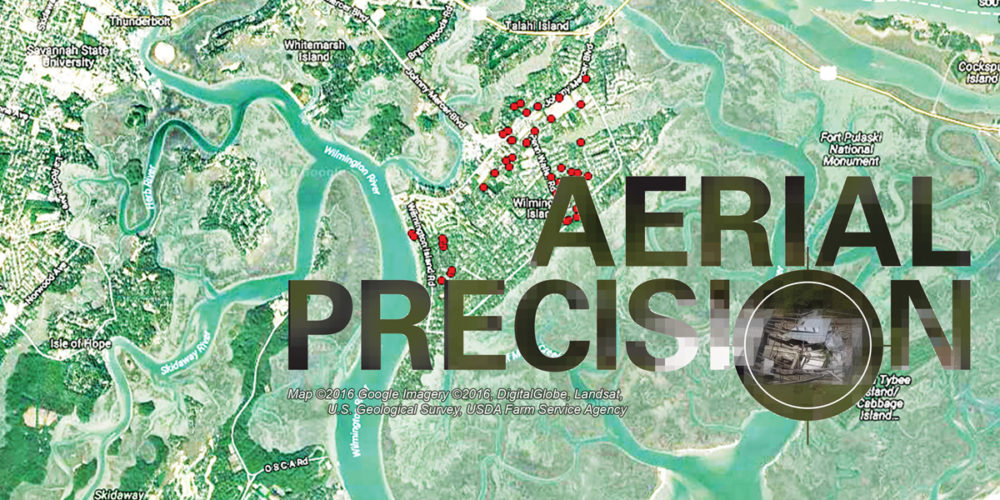The first flex-lease tenant at Embry-Riddle’s new John Mica Engineering and Aerospace Innovation Complex (the MicaPlex) was founded by Embry-Riddle alumni who met as roommates and scuba-diving buddies.
The tenant, Aerial Applications, has already outpaced other unmanned aircraft systems (UAS) service providers in its ability to scan and process images collected by drones. The company launched in 2016 as a comprehensive unmanned aerial operations provider. While it has since stopped offering flight-related services, the UAS surveying projects completed during its first year served as valuable proof-of-concept experiments for an enterprise software and image processing solution that it now plans to license.

In the aftermath of Hurricane Matthew, which devastated areas from Florida to South Carolina in October 2016, the company scanned 150 square miles of downtown Savannah, Ga., using camera-equipped drones. By using a customized software solution and commercially available hardware, Aerial Applications provided Comcast with a map of the area that marked the downed telecom lines roughly 50 percent faster than existing technology, says Joe Sullivan, the company’s CEO. They were also able to do it on a scale that competing UAS companies could not achieve, he adds. [See sidebar.]
The Philadelphia headquartered company has now set up its entire research and development operation at the MicaPlex, the innovation hub at Embry-Riddle’s Research Park in Daytona Beach, Fla.
Scuba-diving Connection
Three of the company’s founding members are alumni of Embry-Riddle’s Daytona Beach Campus: Nathan Sullivan (’12), chief technology officer; Mike Ledermann (’08), former chief pilot; and Kyle Bembnister (’10), former director of systems integration.
Mike, Nathan and Kyle knew each other from their college days, when together they started scuba diving the natural springs throughout Central Florida. Nathan and Kyle soon discovered a mutual interest in embedded computer and automation systems, as well. After graduation, Nathan became a software engineer at Intel; Kyle worked at Insitu as a systems engineer. The two ended up collaborating on Intel’s Llama Mountain project, where Kyle was hired as a subcontractor.
“We were designing the next generation tablet chassis that would provide much better cooling and a better user experience,” Nathan says, explaining that the project earned him a divisional recognition award at Intel. “A very similar design became the Microsoft Surface 4.”

Nathan regularly talked about starting his own company in the budding unmanned aircraft industry, and it was his cousin, Joe — now Aerial Applications’ CEO — who helped breathe life into it.
Wanting to pursue his passion for aviation, Nathan left his job at Intel to start up Aerial Applications. “We had been throwing the idea around, but never got it going until I had my discussion with Joe,” Nathan says. “He brought the business skillset that we didn’t have.”
It was pure chance that Mike met Nathan.
Lured by the promise of the UAS industry, Mike returned to Embry-Riddle in 2013 (he completed his first Embry-Riddle degree in 2008) to expand his knowledge of the technology. He saw an ad for a room in Nathan’s beachside condo on a campus bulletin board and moved in.
“Nathan had known me first as a tenant, but it wasn’t until after I worked for Google [as a contractor on Project Wing] that I learned we had both worked in Silicon Valley,” Mike says.
Mike joined the business discussions in late 2014. He flew the drones himself for many of the company’s early projects, and Kyle worked on software to make flying the drones safer and easier. Both Mike and Kyle, whose expertise is in drone flight, left the company in July 2017, when the startup shifted its focus to its software assets.
Expanding the Suite and Staff
The company is currently working to develop a web-based software suite that could process data gathered by unmanned aircraft. “We’re building out a user-friendly way for customers to have cloud-based access to drone data,” Nathan says.
Now that they’re at the Micaplex, Aerial Applications has quick access to qualified students and graduates who can work on developing this software.
Taylor Guevarez, a current Embry-Riddle student majoring in aeronautical engineering, started working on software code at Aerial Applications even before the company secured its space at the Micaplex. “I was excited to take part in this industry,” Taylor says, expressing an interest in working there after graduation.
Taylor is one of two interns employed by the company. “The talent pool at Embry-Riddle is a huge help for us. It’s accelerating our development, and we’re finding people who can be full-time engineers when they graduate. We hope to keep that talent here,” Nathan says.
